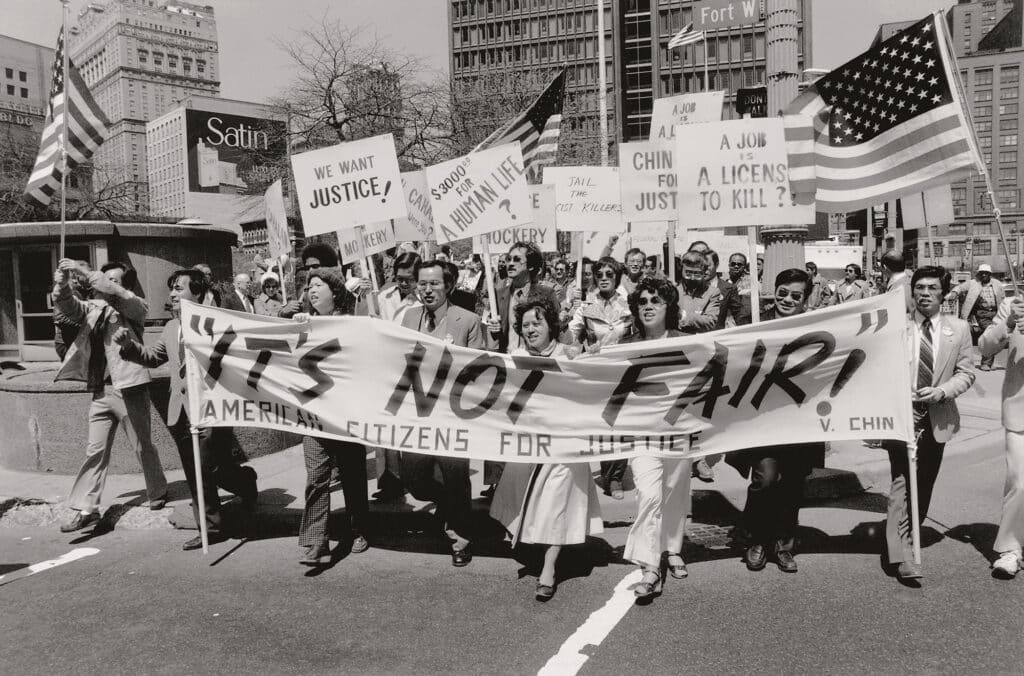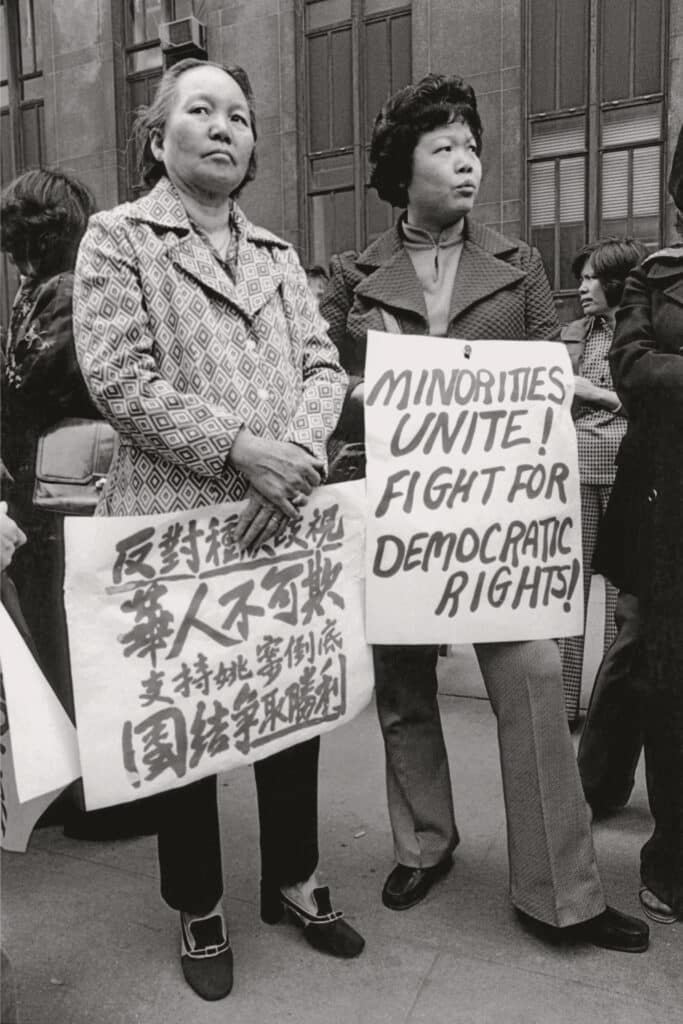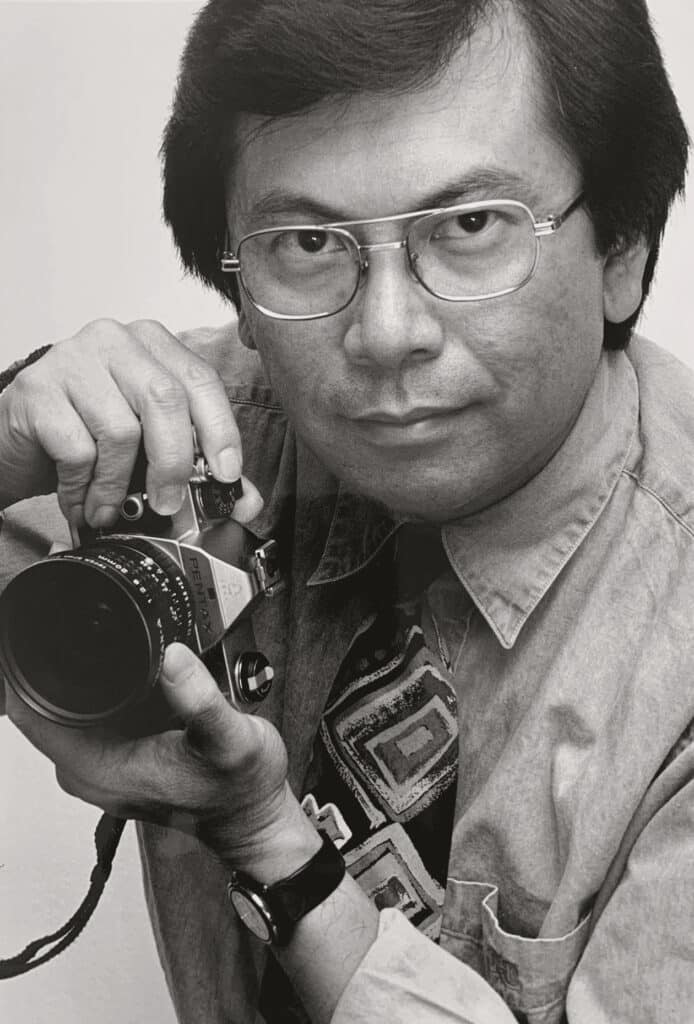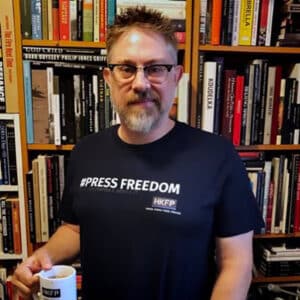“There will never be another Corky Lee,” says photographer An Rong Xu. Known throughout his lifetime as the “undisputed, unofficial Asian American photographer laureate,” Lee documented Asian American and Pacific Islander (AAPI) communities over his 5-decade career, working to break the stereotypes of Asian Americans as docile, passive, and, above all, foreign to this country.
Corky Lee’s Asian America is a retrospective of the photographer’s work from his start in New York’s Chinatown in the 1970’s, to his coverage of diverse Asian American communities across the country, until his untimely passing from Covid in 2021. The book features never-before-seen photographs alongside Lee’s best-known work.
In the essays interspersed through the book, Asian American writers, artists, activists, and friends of Lee reflect on his life and career. Together, they provide historical and cultural context to Lee’s photographs. The essays include a foreword from writer Hua Hsu and contributions from artist Ai Weiwei, filmmaker Renée Tajima-Peña, writer Helen Zia, photographer Alan Chin, historian Gordon Chang, and playwright David Henry Hwan among others.
Corky Lee was born in 1947 in Queens, New York. Growing up in the 1960’s and 1970’s, he was surrounded by a remarkable time of political and social change, from the Civil Rights Movement to the Vietnam War. The times and social activism shaped Lee and drew him into photography.
“In the early 1970s Corky was casting about for a way to document housing conditions and other conditions that he felt required redress and exposure. He often lamented that his writing skills weren’t particularly good, but he was mindful of the adage that a picture is worth 1000 words. So he borrowed a camera from a friend and basically learned how to use it as a tool to document housing conditions throughout the lower East side,” tells the photographer’s brother John Lee.
As Lee continued his work, he became not just a photographer, but both a historian and an artist. Xu explains: “There are two sides of Corky’s work. Often he was more historian than artist, but when both his two sides met, his photos sang like no others. His work is a testament to the sheer willpower and determination of a man hellbent on making sure America could never erase the history and memories of the Asian American people.”
This combination of photographs that are both artistically beautiful and historical documents are also what makes Lee’s work important today. And their importance goes beyond just the Asian American and Pacific Islander community, but to American history as well.
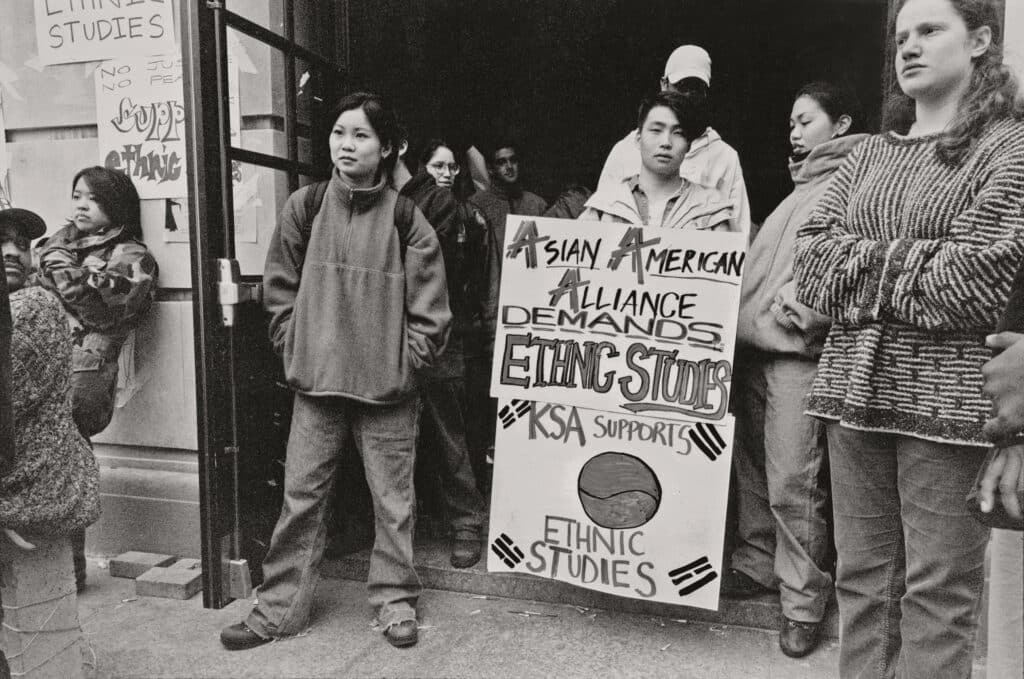
Corky Lee covered everything : protests, street scenes, lunar New Year festivities, political events, concerts, dance performances, health fairs, shop fronts, people at work, people at home, sporting events, nights out on the town. It is a look into the lives of AAPI communities in a way that had never been done before and may never be done again. Lee was not the first to photograph Asian American communities, but his mission was more than just to capture what was going on. It was also about giving those standing up to improve AAPI communities a voice.
“Corky’s work has always been important, because it was a radical act of protest. No one was doing what Corky was doing before Corky,” Xu says. “I think it’s unfortunate that he is only getting his laurels now, because he essentially has an archive of the last 50 years of Asian America in his photographs, and there’s so much to unpack from beyond just his photographs.”
Photographer Alan Chin, who knew Lee since they first met in 2001 when Chin was assigned to photograph Lee for The New York Times, also explains the importance of Lee’s photographs not just in documenting Chinatown in New York City, but working to change the stigma that the neighborhood held for many.
“Many photographers, both non-Chinese and Chinese, had photographed in Chinatown before. But Corky was the first one to do so with the activist intentionality of being a documentary photographer using his images to help assert a specifically Chinese American and Asian American identity. When he started in the late 1960s and early 1970s, New York’s Chinatown was still seen by mainstream white American society as this exotic and foreign place, a stigma that still hasn’t been completely overcome. To the extent that it has, Corky was a pioneering figure in that effort. And all these years later, his photographs of that era have become even more valuable, documenting as they do textures of long vanished life and culture.”
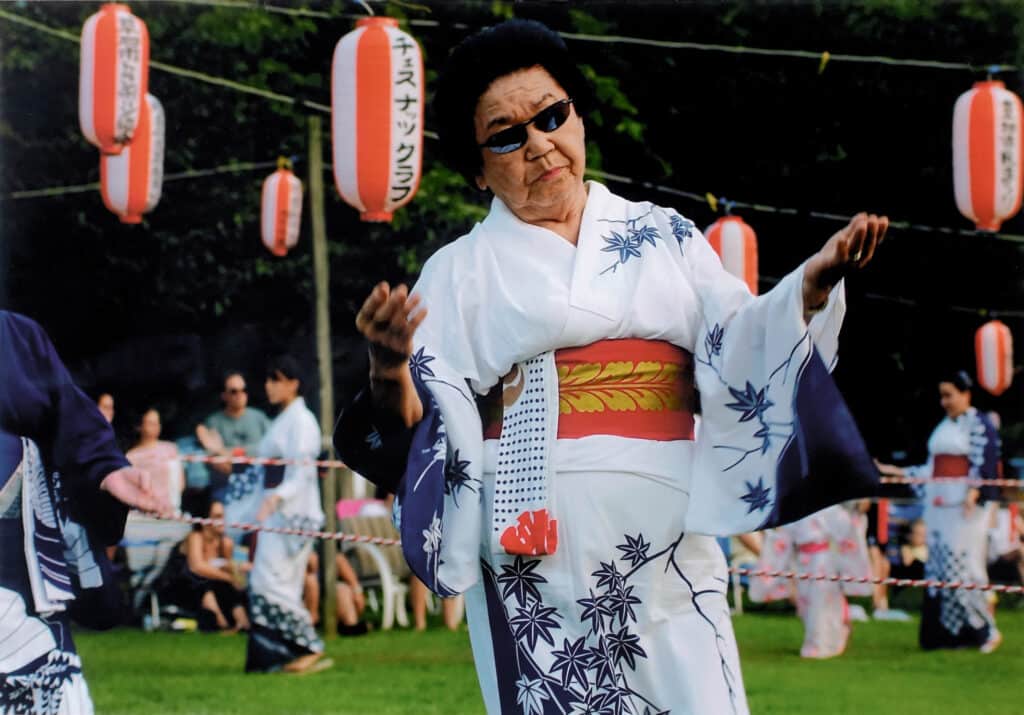
Karen Zhou, Lee’s longtime partner, agrees with the importance of his work. And how he used his images to tell the stories of those overlooked and marginalized by many. “Corky’s work is important today because he cared about an often overlooked marginalized community that seldom gets the spotlight,” she says. “He was trying to make what is invisible visible to the mainstream media. His volumes of photos document the history of Asian Americans particularly on the East coast.”
Some of Lee’s last work was documenting community life and struggle during the coronavirus pandemic. The virus hit Chinatowns all over the country hard, and the racism expressed because of its origin made it worse in many AAPI communities.
Alan Chin recalls the last time he saw Lee: “Corky was everywhere in Chinatown; no event was too small or humble for him to check out and photograph if he was able. The last time I saw him was maybe a month or two before he died, when he mounted a pop-up photo exhibit at the unused newsstand on Mosco Street, a perfect outdoor installation for the COVID moment. That street corner now bears his name as ‘Corky Lee Way’ after a successful community effort to honor him. We had a brief conversation and I thought I’d see him again soon. And then he was dead. Of all the people we tragically lost to COVID, I never would have imagined that Corky would be among them. He seemed much younger than his 73 years, putting much younger photographers to shame with his energy and passion, which never abated. He was an inspiration for Chinese American and Asian American photographers everywhere, and he was a dear friend and colleague.”
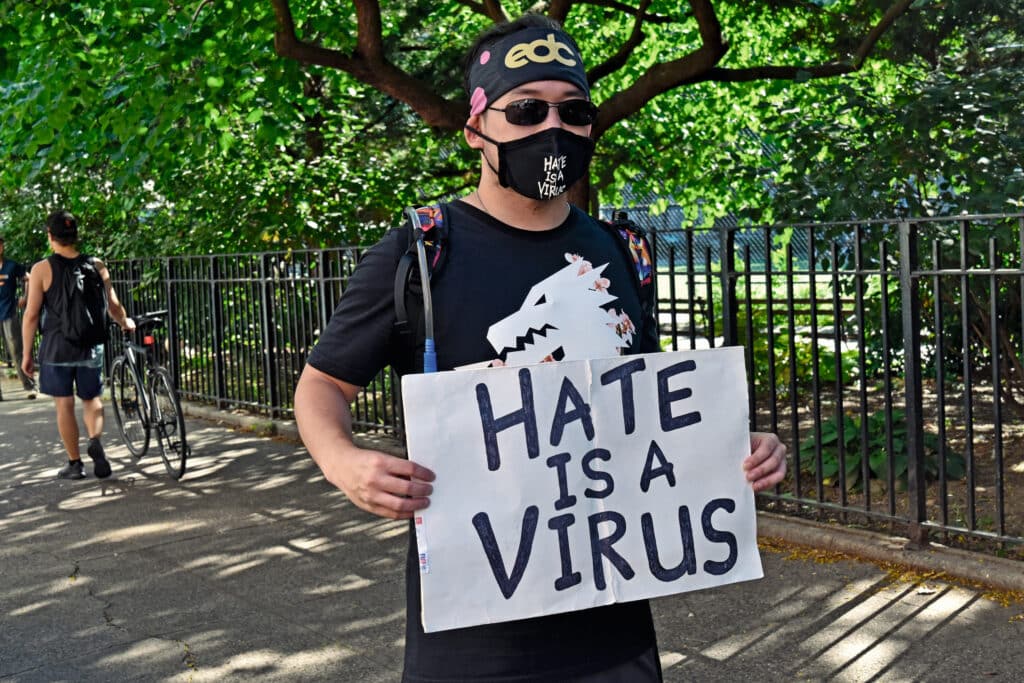
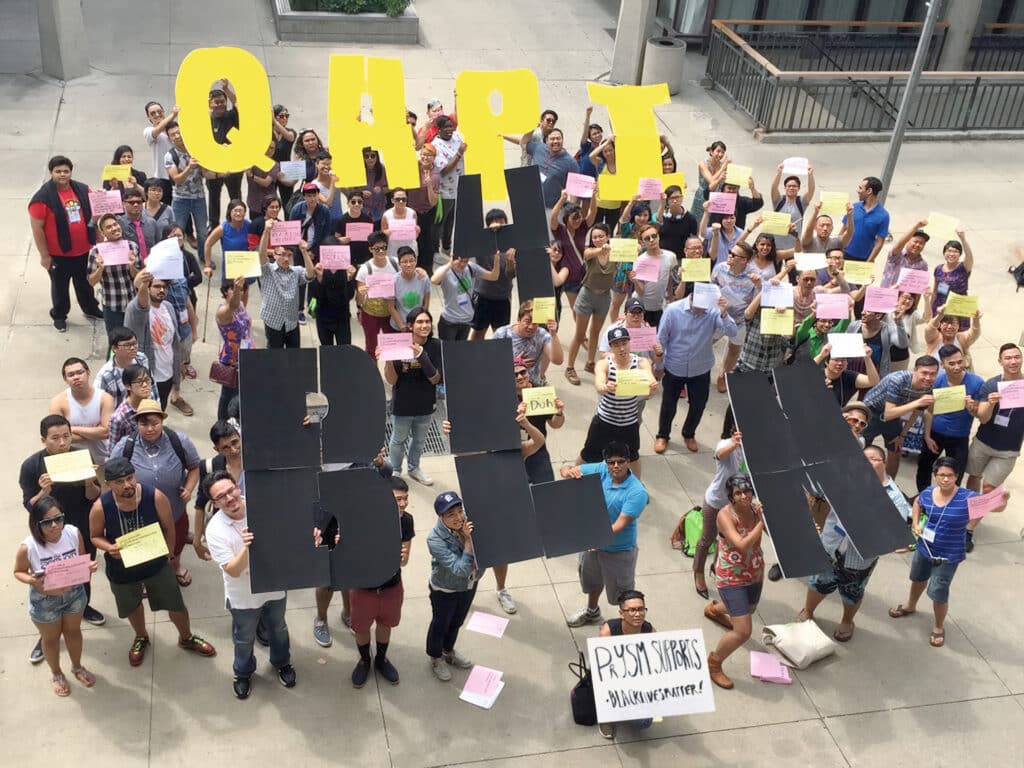
Undeniably, there is much that you can learn from Lee’s 50-years of photographs. And there is much that the next generation of photographers can learn from his dedication and passion as well. “Corky found a calling in life and had to work very hard to pursue his dreams. I hope the younger generation can learn that there are no real shortcuts to success. Corky had faced rejections for his work but he never gave up and along the way he got stories he wanted to tell published,” Zhou believes. “If he were here, he’d say you have to really put in the time and effort and be passionate about what you love.”
Corky Lee’s Asian America is published by Clarkson Potter, an imprint of the Crown Publishing Group, a division of Penguin Random House LLC, New York and can be purchased through their website here.

